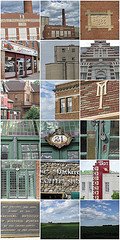


I consider food an art form. So, eating and art go hand and hand. After a great start at one of Minneapolis's finest old burger joints we headed to the city's oldest museum. The Bell Museum of Natural History, University of MN, is housed in an historic edifice. The place collected bird specimens in the 1870s for research. By 1915 "The Bell" opened with some of the world's richest dioramas. These dioramas must have been extremely exciting for all the visitors, especially the children. I got on my knees and peered into the 20-foot wide sandhill crane diorama from a child's perspective. A wide blue sky with clouds seemed higher and wider than before and the cranes were scraping by my face while landing.
In 1915 there was nothing close to the visual art form of a diorama, save a circus coming through town with "live" animals. Artist Francis Lee Jaques' work sends me into a stirring state of admiration for his talent and his creations with every visit. Jaques, who not only worked here, in Minneapolis, but all across the US, painted over 50 dioramas in his lifetime. He studied the movement of his subjects in their natural surroundings for each work. Outdoors. Alive.
Dioramas became the standard in natural history museums and visitor centers for decades. The murals, let alone the dioramas are a high-art form often forgotten because they are the backdrop for the taxidermy. The animals can become the focus, instead of the paintings which create the feeling of a beaver dam, a flood plain or mountain side. Contemporaries Bruce Hornsfall and Charles Corwin, also painted at "The Bell" and their work, while different than Jaques', is completely stunning. For me, the perspective Jaques creates on a flat surface sends me to places I want to see and fills me with inspiration for days ahead. Maybe that is why Jaques' work is so timelessly thrilling and remains tremendously alive after 100 years of living indoors.





No comments:
Post a Comment